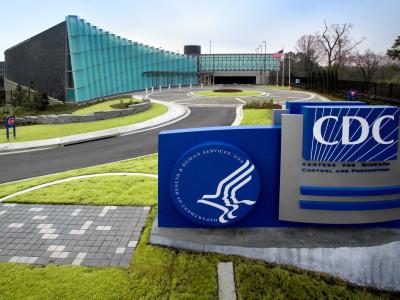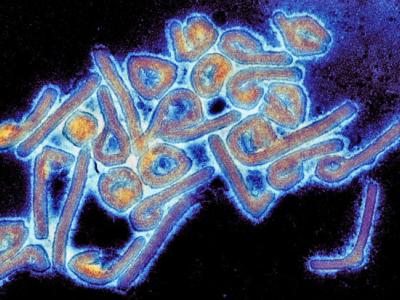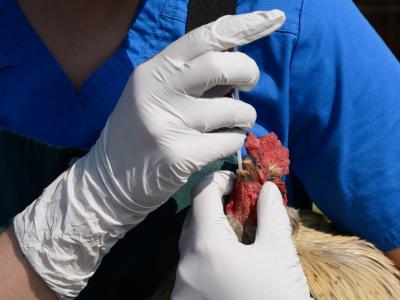Mild COVID-19 not associated with heart damage, study says
Mild COVID-19 infection was not linked to longer-term heart damage, according to a JACC Cardiovascular Imaging study late last week.
University College London researchers matched 74 SARS-CoV-2–seropositive and 75 seronegative healthcare workers, comparing cardiovascular health (6 months post-diagnosis for the COVID group). Cardiovascular magnetic resonance imaging and blood tests showed no difference between groups regarding inflammation, scarring, aortic stiffness, serum biomarkers, or the left ventricle size, muscle mass, or ability.
Because of this, the researchers do not recommend screening non-hospitalized asymptomatic COVID-19 patients for longer-term heart issues. They also note that some of the COVID patients' abnormalities may not have been caused by COVID-19.
All infections were diagnosed prior to May 1, 2020. The total 149-person cohort had more women than men (57.7%) and mostly consisted of White people (69.1%), followed by those of Asian (13.4%) and Black descent (11.4%). The average age was 37, and all patients were relatively healthy, with the most common comorbidities being smoking history (16.1%) and body mass index surpassing 30 kg/m2 (13%). All COVID-19 patients had mild (85.1%) or asymptomatic (14.9%) disease, although one person was hospitalized for 2 days.
"There's still a lot more work to be done, but for now it seems the good news is that mild COVID-19 illness does not appear to be linked to lasting heart damage," said consultant cardiologist Sonya Babu-Narayan, MBBS, BSc, PhD, associate medical director at the British Heart Foundation who was not a part of the study, in a University College London press release.
May 8 JACC Cardiovasc Imaging study
May 8 University College London press release
Cardiovascular function linked with COVID-19 mortality risk
Impaired phase 1 ejection fraction (EF1) —an indicator of potential heart damage—is associated with almost a fivefold increased COVID-19 mortality risk, according to a study published in Hypertension today.
Ejection fraction is the percent of blood the heart's left ventricle pumps out to the body. "Phase 1" is the measure of ejection fraction until the time of maximum ventricle contraction. Some experts believe EF1 is a more sensitive method for detecting preclinical cardiovascular damage. While the researchers note there is no "normal" value, they considered for the study anything below 25% as impaired.
The retrospective cohort included 129 patients hospitalized with COVID-19 in Wuhan, China, and 251 patients hospitalized with COVID-19 in South London. All were admitted from February to May 2020 and received echocardiography. The average patient age was 58 years.
Those with impaired EF1 had a 4.83 hazard ratio for death after adjusting for demographics, comorbidities, high-sensitive cardiac troponin, and C-reactive protein levels (95% confidence interval, 2.35 to 9.95).
"In the combined group [of Wuhan and London patients], EF1 was a stronger predictor of survival than other clinical, laboratory, and echocardiographic characteristics including age, comorbidities, and biochemical markers," the study authors write, adding that similar results were found when comparing 266 control patients without COVID-19. "Impaired EF1 is strongly associated with mortality in COVID-19 and probably reflects preexisting, preclinical heart failure."
"The findings suggest that if we can prevent the very early chronic damage to the heart detected using first-phase ejection fraction imaging, then people will be much more likely to survive respiratory infections like COVID-19," said senior author Phil Chowienczyk, MBBS, BSc, in an American Heart Association press release.
May 10 Hypertension abstract
May 10 AHA press release
CDC adds another H5N8 avian flu strain to risk assessment list
Following detections of the first known human H5N8 avian flu cases in Russia earlier this year, the US Centers for Disease Control and Prevention (CDC) added H5N8 to its Influenza Risk Assessment Tool (IRAT).
As part of the IRAT assessment, the CDC uses two criteria sets to gauge the virus risk, one to weigh potential human-to-human spread, and the other targeting the main public health impact. The addition was first reported by Avian Flu Diary (AFD), an infectious disease news blog.
The CDC said the virus that infected the poultry workers in Russia poses an overall low-to-moderate risk, with the risk of human-to-human spread at the lower range of risk and the public health impact at the lower-to-middle range of the moderate risk category.
In 2015 the CDC added the first H5N8 virus to the list, one detected in a captive falcon that was similar to a clade that infected birds in Europe and Asia in late 2014 and early 2015.
CDC IRAT page
May 8 AFD post
Feb 22 CIDRAP News story "Russia reports first human H5N8 avian flu cases"
High-path H5 avian flu strikes poultry in Bulgaria, Romania
Two European countries reported more highly pathogenic avian flu outbreaks in poultry, which involve H5 in Bulgaria and H5N8 in Romania, according to the latest notifications from the World Organization for Animal Health (OIE).
Bulgaria reported three outbreaks at commercial farms in Plovdiv providence in the south-central part of the country that began from Apr 23 and May 4. Taken together, the virus sickened 218 of 121,850 birds. So far the source of outbreak hasn't been determined.
Elsewhere, Romania reported an H5N8 outbreak at a commercial farm in Mures County in the north central region that began on May 5, killing 9,658 of 179,192 birds. So far, animal health officials haven't confirmed how the outbreak began.
May 5 OIE report on H5 in Bulgaria
May 7 OIE report on H5N8 in Romania










